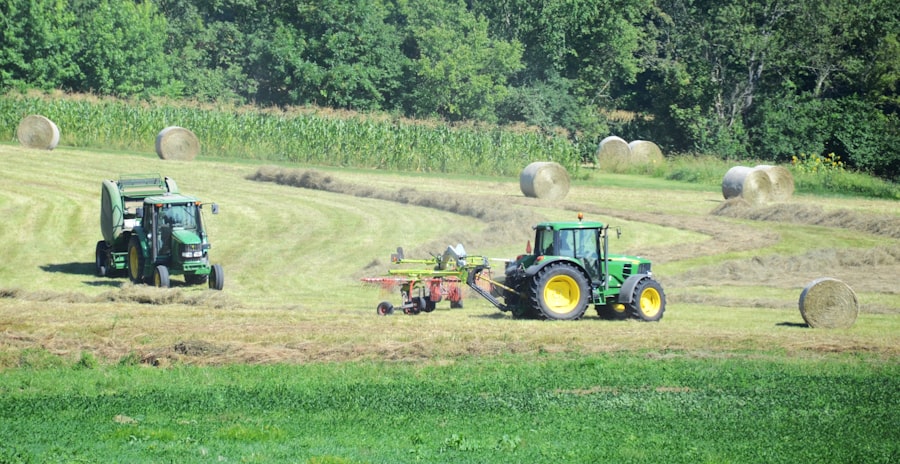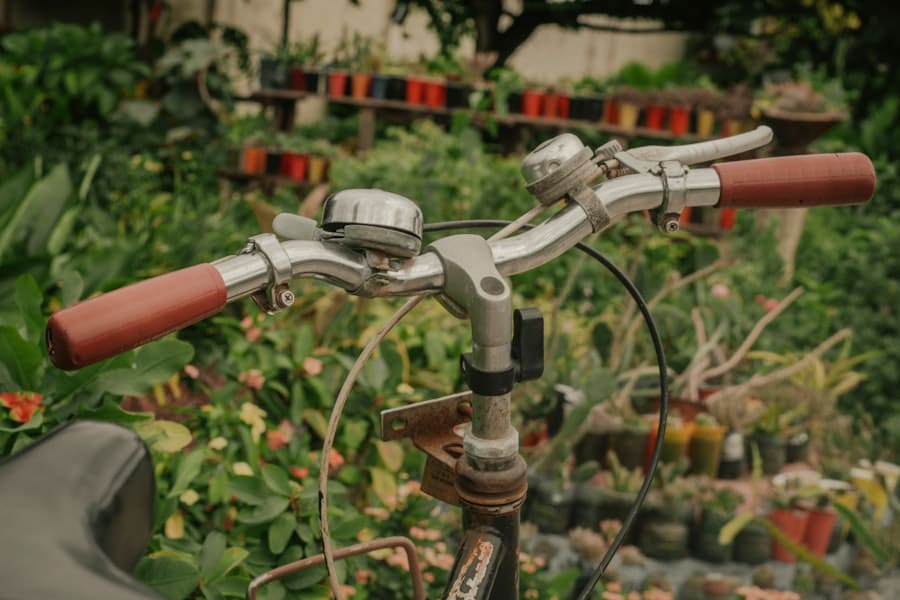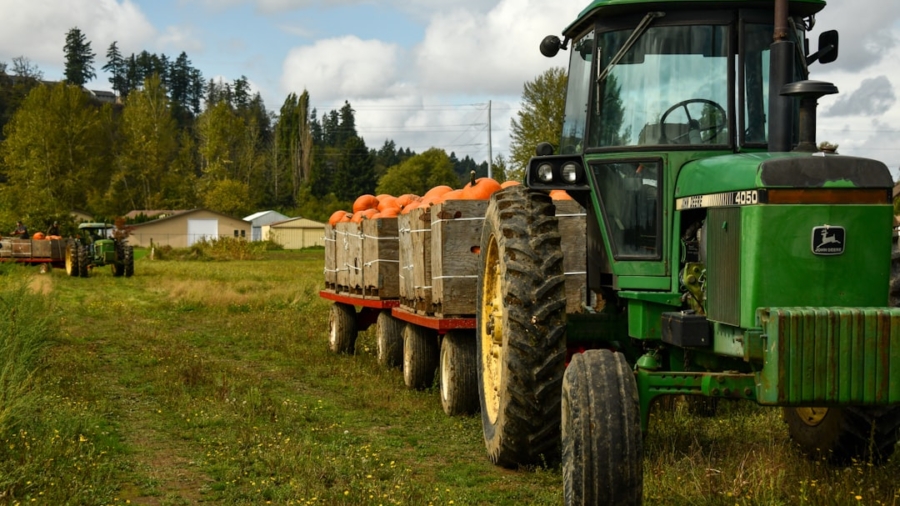The advent of technology has revolutionized numerous sectors, and agriculture is no exception. Smart agriculture tools encompass a wide array of technologies designed to enhance farming practices, improve efficiency, and increase productivity.
By integrating these technologies, farmers can make informed decisions that lead to better crop management, resource allocation, and ultimately, higher yields. Smart agriculture tools are not merely gadgets; they represent a paradigm shift in how farming is approached. Traditional farming methods often relied on intuition and experience, but the integration of technology allows for data-driven decision-making.
For instance, sensors placed in fields can monitor soil moisture levels, temperature, and nutrient content in real-time. This data can then be analyzed to determine the optimal times for planting, watering, and harvesting crops. As a result, farmers can maximize their output while minimizing waste and environmental impact.
Key Takeaways
- Smart agriculture tools are revolutionizing the way farming is done, using technology to optimize production and sustainability.
- Smart agriculture plays a crucial role in ensuring food sustainability by improving efficiency, reducing waste, and minimizing environmental impact.
- Precision farming techniques, enabled by smart agriculture tools, have a significant impact on food production by maximizing yields and minimizing resource use.
- IoT and data analytics are transforming agriculture by providing real-time insights and decision-making support for farmers.
- Drones are increasingly being used in agriculture to monitor crops, assess plant health, and optimize field management, leading to improved efficiency and productivity.
The Role of Smart Agriculture in Food Sustainability
Food sustainability is a pressing global issue, with the United Nations projecting that the world’s population will reach nearly 10 billion by 2050. This surge in population will inevitably increase the demand for food, necessitating innovative solutions to ensure that agricultural practices can meet this demand without depleting natural resources. Smart agriculture plays a pivotal role in this context by promoting sustainable farming practices that enhance productivity while conserving resources.
One of the key aspects of smart agriculture is its ability to optimize resource use. For example, precision farming techniques allow farmers to apply fertilizers and pesticides more efficiently, targeting only the areas that require treatment rather than blanket application across entire fields. This not only reduces chemical runoff into waterways but also minimizes the environmental footprint of farming operations.
Additionally, smart agriculture tools can help farmers adopt crop rotation and diversification strategies that improve soil health and reduce dependency on chemical inputs.
Precision Farming and its Impact on Food Production

Precision farming is a cornerstone of smart agriculture, utilizing technology to monitor and manage field variability in crops. This approach enables farmers to apply inputs such as water, fertilizers, and pesticides at variable rates across their fields based on specific needs rather than using a one-size-fits-all method. By employing GPS technology and remote sensing, farmers can gather detailed information about their fields, allowing them to make precise adjustments that enhance crop production.
The impact of precision farming on food production is profound. For instance, a study conducted by the American Society of Agronomy found that precision agriculture practices can increase crop yields by 10-20% while simultaneously reducing input costs by 15-30%. This dual benefit not only boosts profitability for farmers but also contributes to food security by increasing the overall supply of food available for consumption.
Moreover, precision farming techniques can lead to more sustainable practices by reducing the overuse of fertilizers and pesticides, which can have detrimental effects on soil health and local ecosystems.
IoT and Data Analytics in Agriculture
The Internet of Things (IoT) has emerged as a transformative force in agriculture, enabling the interconnection of devices and systems that collect and share data seamlessly. In agricultural settings, IoT devices such as soil moisture sensors, weather stations, and crop monitoring drones work together to provide real-time insights into various aspects of farming operations. This interconnectedness allows farmers to make timely decisions based on accurate data rather than relying solely on historical trends or guesswork.
Data analytics plays a crucial role in interpreting the vast amounts of information generated by IoT devices. By employing advanced analytics techniques, farmers can identify patterns and correlations that inform their decision-making processes. For example, data analytics can reveal how specific weather conditions affect crop growth or how soil composition influences yield potential.
Armed with this knowledge, farmers can implement targeted interventions that enhance productivity while minimizing waste. The combination of IoT and data analytics not only streamlines operations but also fosters a more proactive approach to farming.
The Benefits of Using Drones in Agriculture
Drones have become an integral part of modern agricultural practices, offering a range of benefits that enhance efficiency and productivity. Equipped with high-resolution cameras and sensors, drones can capture detailed aerial imagery of fields, allowing farmers to assess crop health from above. This bird’s-eye view provides valuable insights into plant growth patterns, pest infestations, and nutrient deficiencies that may not be easily visible from the ground.
One significant advantage of using drones is their ability to conduct rapid assessments over large areas. Traditional methods of monitoring crop health often involve labor-intensive ground surveys that can be time-consuming and costly. In contrast, drones can cover vast expanses in a fraction of the time, enabling farmers to identify issues early and take corrective action before they escalate.
Furthermore, drones can be used for precision application of inputs such as fertilizers and pesticides, ensuring that these materials are applied only where needed, thereby reducing waste and environmental impact.
The Role of Artificial Intelligence in Optimizing Crop Yield

Artificial intelligence (AI) is increasingly being harnessed in agriculture to optimize crop yield through predictive analytics and machine learning algorithms. By analyzing historical data alongside real-time inputs from IoT devices, AI systems can forecast crop performance under various conditions. This predictive capability allows farmers to make informed decisions about planting schedules, irrigation needs, and pest management strategies.
For instance, AI-driven platforms can analyze weather patterns and soil conditions to recommend the best times for planting specific crops. Additionally, machine learning algorithms can identify which varieties of crops are best suited for particular environments based on historical performance data. By leveraging AI technology, farmers can enhance their operational efficiency and increase their yields while minimizing resource use.
The integration of AI into agricultural practices represents a significant advancement toward achieving food security in an increasingly unpredictable climate.
Smart Irrigation Systems and Water Conservation in Agriculture
Water scarcity is one of the most pressing challenges facing agriculture today, particularly in regions prone to drought or where water resources are limited. Smart irrigation systems have emerged as a solution to this challenge by utilizing technology to optimize water usage in farming operations. These systems employ sensors and automated controls to deliver precise amounts of water based on real-time soil moisture levels and weather conditions.
By implementing smart irrigation systems, farmers can significantly reduce water waste while ensuring that crops receive the necessary hydration for optimal growth. For example, drip irrigation systems equipped with moisture sensors can deliver water directly to the root zone of plants, minimizing evaporation and runoff. Studies have shown that such systems can reduce water usage by up to 50% compared to traditional irrigation methods while maintaining or even increasing crop yields.
Future Trends and Challenges in Smart Agriculture
As smart agriculture continues to evolve, several trends are emerging that will shape its future landscape. One notable trend is the increasing adoption of autonomous machinery, such as self-driving tractors and robotic harvesters. These innovations promise to reduce labor costs and improve efficiency by automating repetitive tasks traditionally performed by human workers.
However, the transition to smart agriculture is not without its challenges. One significant hurdle is the digital divide between large agribusinesses with access to advanced technologies and smallholder farmers who may lack the resources or knowledge to adopt these tools effectively. Bridging this gap will require targeted initiatives aimed at providing training and access to technology for smaller farms.
Additionally, concerns regarding data privacy and security are paramount as more agricultural operations become reliant on connected devices and cloud-based platforms. Ensuring that sensitive information remains protected while still allowing for data sharing among stakeholders will be crucial for fostering trust in smart agriculture technologies. In conclusion, smart agriculture tools represent a transformative force in modern farming practices.
By leveraging technology such as IoT devices, AI algorithms, drones, and precision farming techniques, farmers can optimize their operations for greater efficiency and sustainability. As the agricultural sector continues to adapt to changing environmental conditions and increasing global demand for food, embracing these innovations will be essential for ensuring a resilient future for food production.
In the quest for enhancing food sustainability, smart agriculture tools play a pivotal role by optimizing resource use and increasing crop yields. These innovative technologies are transforming traditional farming practices, making them more efficient and environmentally friendly. For those interested in the broader spectrum of smart technology applications, an article on smartwatches that allow you to view pictures offers insights into how smart devices are becoming increasingly integrated into our daily lives, much like how smart agriculture tools are revolutionizing the farming industry. Both articles highlight the growing trend of smart technology improving various aspects of life and industry.
FAQs
What are smart agriculture tools?
Smart agriculture tools are technological solutions that use data, sensors, and automation to improve farming practices. These tools can include precision agriculture technologies, drones, IoT devices, and data analytics platforms.
How do smart agriculture tools boost food sustainability?
Smart agriculture tools help farmers optimize their use of resources such as water, fertilizers, and pesticides, leading to more efficient and sustainable farming practices. These tools also enable better monitoring of crop health and environmental conditions, leading to improved yields and reduced environmental impact.
What are the benefits of using smart agriculture tools?
Some benefits of using smart agriculture tools include increased productivity, reduced resource usage, improved crop quality, and better decision-making for farmers. These tools also contribute to environmental sustainability by minimizing the negative impact of farming on the environment.
How do smart agriculture tools contribute to food security?
Smart agriculture tools help farmers produce more food with fewer resources, making farming more efficient and sustainable. This contributes to food security by ensuring a stable and reliable food supply, especially in regions with limited resources or facing environmental challenges.
Are smart agriculture tools accessible to all farmers?
While the adoption of smart agriculture tools is growing, access to these technologies can still be limited for some farmers, especially in developing countries. Efforts are being made to make these tools more accessible and affordable for all farmers, including through government initiatives and private sector partnerships.

